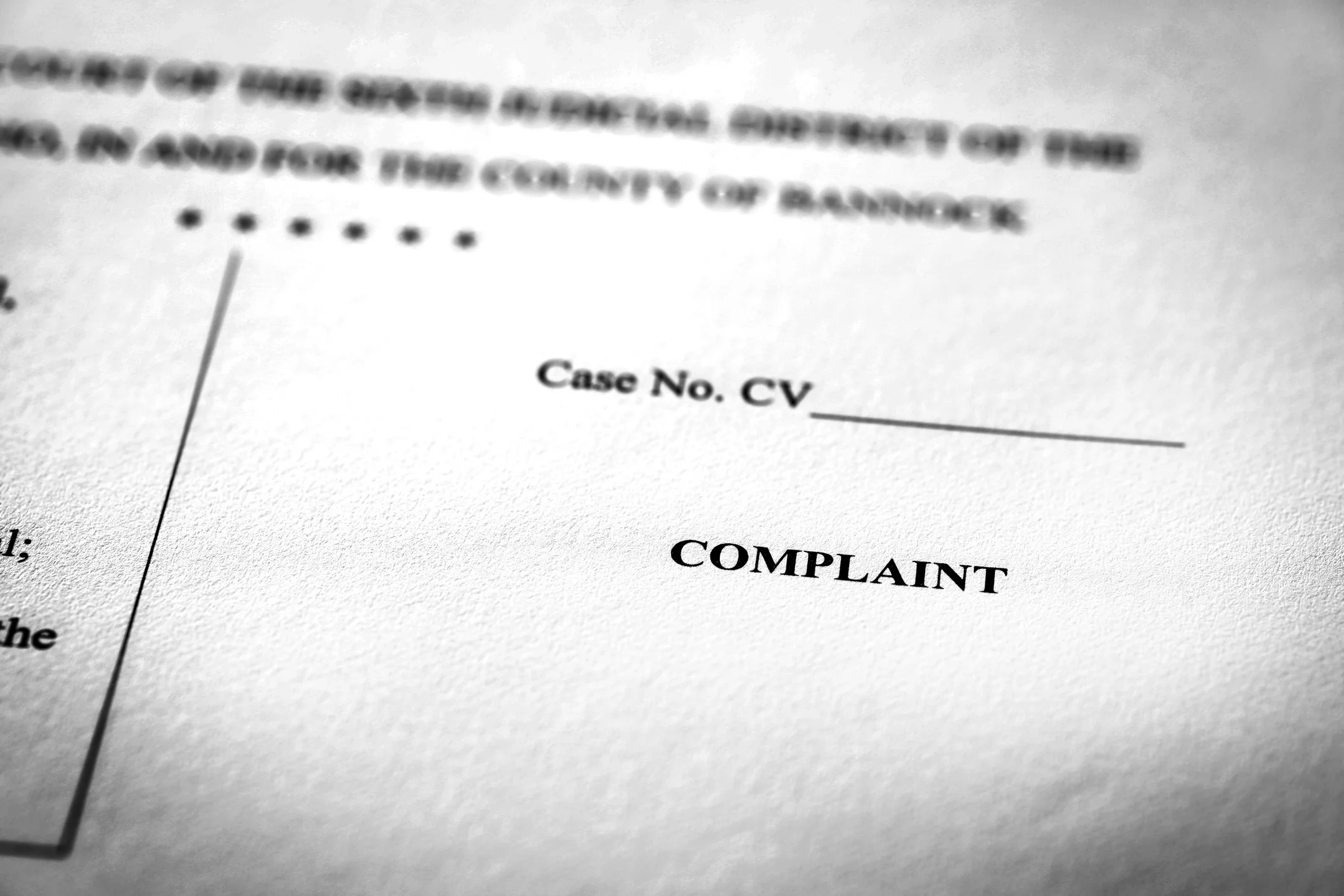Defendants faced with a complaint chock-full of aggressive claims often respond with a demurrer, hoping to chop the complaint down to size. Far less common is the motion to strike, but it, too, can be a powerful tool. Cal. Code Civ. Proc. § 436 allows litigants to move to strike irrelevant, false, or improper matter from pleadings. This may include anything from sensitive personal matters intended to embarrass rather than support a legal claim, to specific requests for relief unsupported by the claims and allegations. In some situations, a motion to strike may be the better tool to carve away allegations, especially when a demurrer is unlikely to be granted, or unable to eliminate the troublesome statements in a complaint.
A scalpel for when a cleaver won’t do
One limitation of demurrers is that they must target entire causes of action. A motion to strike, however, may be used to challenge a portion of a cause of action that is defective on its face. “Although a defendant may not demur to that portion, in such cases, the defendant should not have to suffer discovery and navigate the often dense thicket of proceedings in summary adjudication.” Moran v. Prime Healthcare Mgmt., Inc., 94 Cal. App. 5th 166, 174 (2023), review dismissed, cause remanded sub nom. Moran v. Prime Healthcare Mgmt., 329 Cal. 3d 815 (2025). For example, in Moran, the plaintiff had combined two theories of liability into a single Unfair Competition Law, and therefore a demurrer could not be used to excise the facially deficient theory. Id. The Court of Appeal affirmed the use of a motion to strike to achieve this purpose. Id. Savvy plaintiffs often plead multiple theories in support of a single cause of action; in such circumstances, a motion to strike may be the only practical way to separate the wheat from the chaff.
A lasso for reigning in relief
A motion to strike may also be useful when a complaint seeks relief that is not supported by its claims. Plaintiffs will often lard their prayer for relief with requests that a court can never grant. In such cases, a motion to strike may be the only way to eliminate a factually unsupported threat of punitive or exemplary damages or other extraordinary relief. See Los Angeles Unified School Dist. v. Sup. Ct., 14 Cal. 5th 758, 764 (2023) (affirming the lower court’s order striking a claim for treble damages when such damages were unavailable per statute.)
A shield against embarrassment or abuse
Finally, a defendant may wish to strike information from a complaint that is sensitive, private, or embarrassing to the defendant. For instance, in Overstock.com, Inc. v. Goldman Sachs Group, Inc., the court noted that documents disclosing a party’s private financial information were irrelevant and should have been ordered struck from the record. 231 Cal. App. 4th 471, 508 (2014). The court explained that this was necessary both because the information was irrelevant to the proceeding, and because the California Constitution protects the right of privacy. Id. Courts also recognize that striking irrelevant, sensitive material from a complaint can save the parties and the court the burden of preparing and deciding motions to seal. See Mercury Interactive Corp. v. Klein, 158 Cal. App. 4th 60, n.35. (2007).
Beyond guarding the right to privacy, motions to strike may be appropriate where a pleading employs irrelevant attacks on a person’s character or dignity in an effort to embarrass or harm them. Courts have the authority to strike such scandalous and abusive statements from pleadings. Oiye v. Fox, 211 Cal. App. 4th 1036, 1070 (2012). In doing so, the court may prevent prying and harassing discovery aimed at bullying a defendant rather than resolving any bona fide dispute.
Conclusion
Of course, not every motion is worth the cost, even if it succeeds. Indeed, if the target of a motion to strike is “irrelevant” allegations included only to embarrass, it is possible that motion practice itself will serve only to exacerbate the issue—particularly if there is likely to be publicity surrounding the case. On the other hand, a motion to strike may foreclose costly discovery into irrelevant matters, or stem ongoing battles over what information will be public and what will remain under seal.
Significantly, the parties must meet and confer in advance of filing a motion to strike (Cal. Code Civ. Proc. § 435.5), so there may be an opportunity to stipulate to the removal of facially-defective legal theories or irrelevant allegations without prolonged (and public) motion practice. Parties should take this opportunity seriously, as it may save everyone time, money, and/or “face” in the long run.
For more information regarding Alto Litigation’s litigation practice, please contact one of Alto Litigation’s partners: Bahram Seyedin-Noor, Bryan Ketroser, Joshua Korr, or Kevin O’Brien.
****
Disclaimer: Materials on this website are for informational purposes only and do not constitute legal advice. Transmission of materials and information on this website is not intended to create, and their receipt does not constitute, an attorney-client relationship. Although you may send us email or call us, we cannot represent you until we have determined that doing so will not create a conflict of interests. Accordingly, if you choose to communicate with us in connection with a matter in which we do not already represent you, you should not send us confidential or sensitive information, because such communication will not be treated as privileged or confidential. We can only serve as your attorney if both you and we agree, in writing, that we will do so.
The materials on this website are not intended to constitute advertising or solicitation. However, portions of this website may be considered attorney advertising in some states.
Unless otherwise specified, the attorneys listed on this website are admitted to practice in the State of California.

